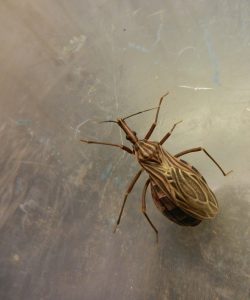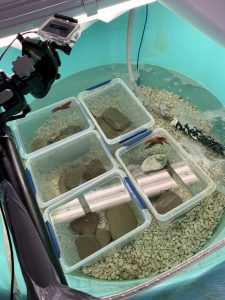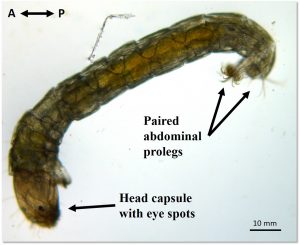 The unifying theme of my research is circadian rhythms and biological timekeeping. I am broadly interested in the mechanisms by which the circadian system is coordinated and in turn orchestrates physiology and behaviour. I am also interested in the possible translation of circadian research into primary care practice. It has become increasingly clear in today’s world of electric lighting, shiftwork, and social jet lag that there is a pressing need to understand the contribution of the circadian system to health and disease.
The unifying theme of my research is circadian rhythms and biological timekeeping. I am broadly interested in the mechanisms by which the circadian system is coordinated and in turn orchestrates physiology and behaviour. I am also interested in the possible translation of circadian research into primary care practice. It has become increasingly clear in today’s world of electric lighting, shiftwork, and social jet lag that there is a pressing need to understand the contribution of the circadian system to health and disease.
Brief descriptions of specific ongoing projects are provided below.
Primary Healthcare
1. INCORPORATION OF CIRCADIAN CONCEPTS INTO PRIMARY HEALTHCARE
The translation of basic science into applicable and useful technologies and products for society is an important aspect of the modern research environment. To that end I initiated a collaborative project to investigate and increase the incorporation of chronobiological concepts into primary care practice, specifically as related to the association between circadian disruption and various chronic illnesses, including metabolic disorders and cardiovascular disease.
Current projects:
- The influence of chronotype on the risk of developing chronic illness.
- Developing protocols and procedures to incorporate circadian biology into standard practice in family medicine.
Collaborators:
- Justin Gagnon, MA, MSc Family Medicine, PhD Candidate McGill University, Montreal, QC
- Dr. Carolyn Arbanas, MD, CCFP-EM, Lecturer, University of Toronto, Toronto, ON
- Dr. Stefania Moro, Research Associate, Faculty of Health, York University, Toronto, ON
2. HEALTHCARE ON CAMPUS
We have developed several health-related projects for students in the new Interdisciplinary Health Program at St.FX University.
Current projects:
- Time to study: The interaction of chronotype, social jetlag, and university student performance.
- Pillow talk: Mixed-methods study of student awareness of and access to sexual health primary care resources at a residential university.
Collaborators:
- Dr. Carolyn Arbanas, MD, CCFP-EM, Lecturer, University of Toronto, Toronto, ON
- Dr. Stefania Moro, Research Associate, Faculty of Health, York University, Toronto, ON
Invertebrate circadian systems
1. CIRCADIAN ORCHESTRATION OF INSECT REPRODUCTION
Successful reproduction is critical to the survival of every species. We study how the circadian system coordinates the many complex processes involved in reproduction. We employ the insect model organism Rhodnius (pictured at right) as it represents a more tractable system. The insect circadian system is remarkably similar to that of mammals allowing meaningful comparisons with vertebrate circadian biology and human health.
Current projects:
- Expression and circadian cycling of the ecdysteroid receptor in an adult insect.
2. CIRCADIAN SYSTEM OF THE SEA STAR, A BASAL DEUTEROSTOME
Echinoderms, like sea stars and sea urchins, are more closely related to us than most other invertebrate animals. Yet surprisingly little is known about the organization of the circadian system of these organisms. We are beginning to investigate the circadian biology of the sea star, Asterias forbesi to gain a better understanding of the evolution of the animal circadian systems and how it has been modified in these five-armed, headless creatures.
Current projects:
- Circadian rhythms and circadian clocks in the sea star, Asteria forbesi. (One of our sea star experimental setups is pictured at right.)
Interaction of host-parasite circadian clocks
1. CIRCADIAN INTERACTION OF THE CHAGAS’ DISEASE-CAUSING TRYPANOSOME WITH ITS INSECT HOST
Parasites and hosts form an intimate and complex physiological liaison. The circadian systems of parasites and hosts interact at various levels but this relationship, and its implications for health and disease, is barely beginning to be understood.
The model organism Rhodnius prolixus provides an ideal system with which to study the interactions of host-parasite circadian clocks. Rhodnius, a blood-sucking bug from South America, transmits the parasite Trypanosoma cruzi, the causative agent of Chagas’ disease. Recent results suggest that infection of Rhodnius with Trypanosoma affects the circadian behaviour of the host and that these effects may differ depending on the species of Trypanosoma. We are interested in using the Rhodnius-Trypanosoma system to study parasitic manipulation of host circadian biology, specifically of reproductive behaviour and physiology.
2. THE PROTIST MOLECULAR CIRCADIAN CLOCKWORK
Parasites have well-documented circadian rhythms and therefore must possess endogenous circadian clocks that generate them. Little is known of the molecular clockwork of most parasites, especially protists. Elucidation of protist circadian molecular machinery is essential to understanding the circadian biology of the parasites and the interaction of the circadian system of the parasite with that of its host.
Current projects:
- Bioinformatic search employing HMMs for known circadian clock components in protists.
Rhythmic Regulation of Insect Osmoregulation
1. ADAPTATIONS OF A SALT WATER MIDGE LARVAE TO LIFE IN THE INTERTIDAL ZONE
Exclusively marine insects are rare and largely dominated by chironomids (non-biting midges). The physiological adaptations of insects to a marine environment remain poorly understood. The salt water midge Halocladius variabilis (pictured at right), which is highly abundant in Nova Scotia, provides an ideal opportunity to explore how these insects survive in the highly variable environment of the intertidal zone.
Current projects:
- Cyclic patterns of changing salinity tolerance in the salt water midge, Halocladius variabilis.
- Expression and cycling of ion channels in osmoregulatory tissues of the salt water midge, Halocladius variabilis.
- PER expression in osmoregulatory tissues of the salt water midge larva, Halocladius variabilis.
Collaborators:
- Dr. David Garbary, FLS, St.FX University, Antigonish, NS
- Dr. Andrew Donini, York University, Toronto, ON
2. CIRCADIAN REGULATION OF THE INSECT MALPIGHIAN TUBULES
The Malpighian tubules are one of the main osmoregulatory organs in insects. In Drosophila, the Malpighian tubules have been shown to express cycling PER and to possess an autonomous clock. How this clock is regulated and its physiological function remain unknown.
Current projects:
- Daily changes of secretion by Drosophila Malpighian tubules.
- Expression and cycling of the ecdysteroid receptor (EcR) in Malpighian tubules of adult Drosophila.




